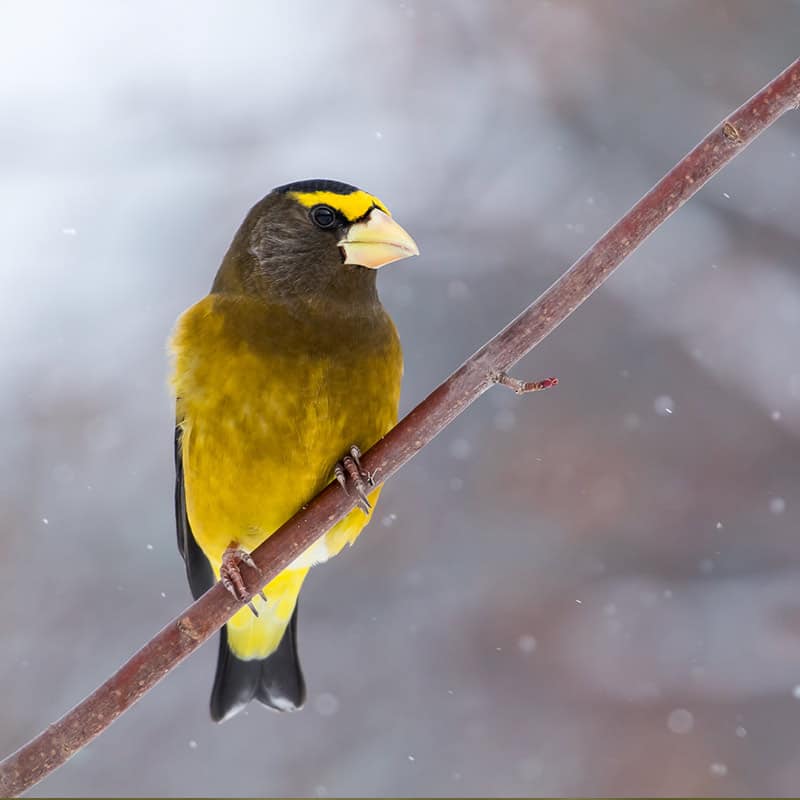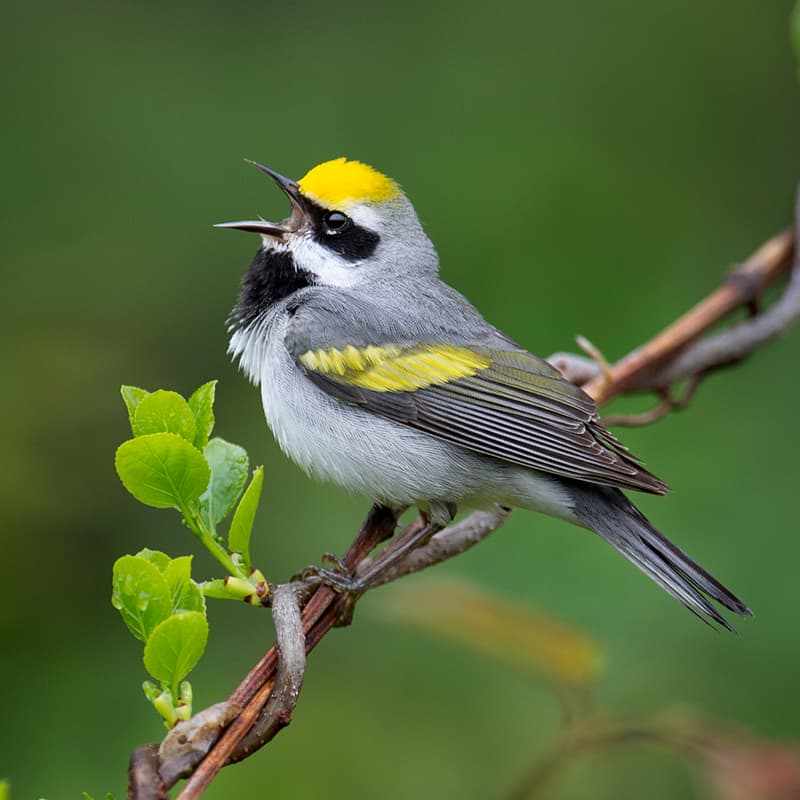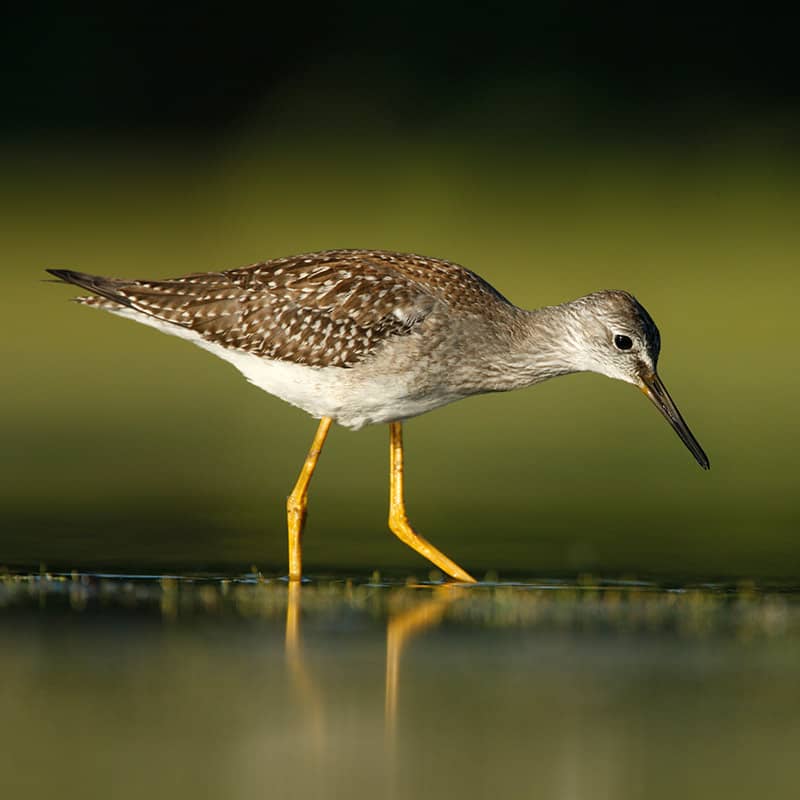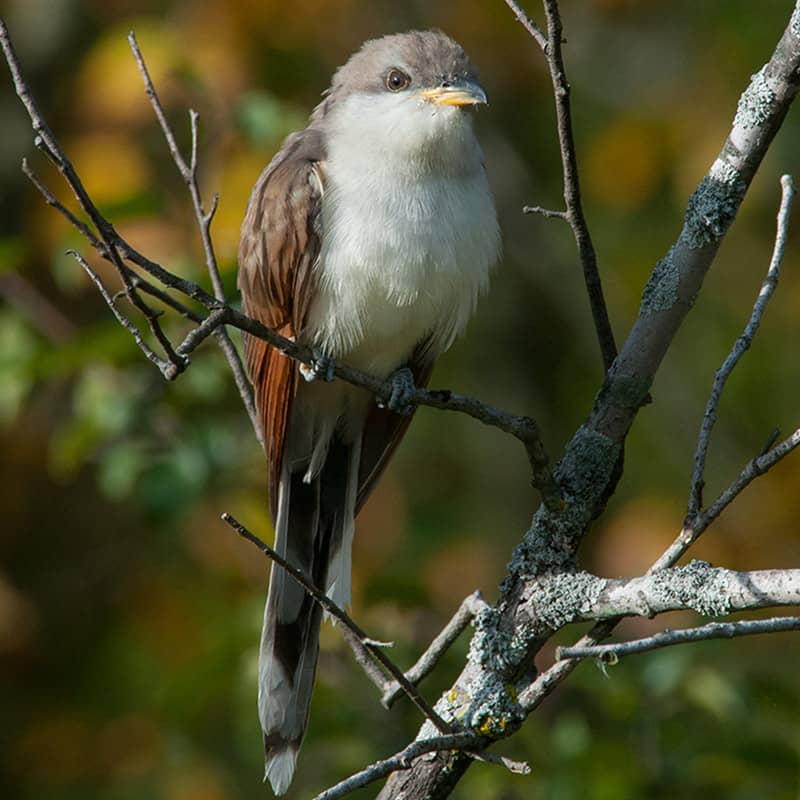Evening Grosbeak
Coccothraustes vespertinus
Continental Conservation of the Evening Grosbeak: A Road to Recovery Pilot Species Project
The Evening Grosbeak (Coccothraustes vespertinus) is a large North American finch distributed widely across Canada and the United States. The species is a secretive breeder in northern and montane coniferous forests while using an irruptive migration strategy during the non-breeding season – regularly moving out of its breeding range in response to winter tree seed availability. This species was once a common, gregarious winter feeder bird throughout many parts of its range, but now Evening Grosbeak is the steepest declining land bird in the continental United States and Canada with a range wide population loss of 92% since 1970. This decline prompted several recent conservation listings: Partners in Flight – Yellow Watchlist (2016), Canada Special Concern Species (COSEWIC 2016), and IUCN Red List –Vulnerable (2018). Causes for the Evening Grosbeak decline are not yet fully understood, but several factors have been cited as playing a role: fluctuations in spruce budworm populations – a key breeding season food source, mature forest alteration and loss, collision mortalities, disease, and climate change effects on northern forests.

Conservation Projects
Through the support of R2R and with funding from the Knobloch Family Foundation we are expanding our Evening Grosbeak conservation efforts. This project began in 2017 with Evening Grosbeak winter movement research in Pennsylvania which was initiated by the PA Natural Heritage Program at the Western Pennsylvania Conservancy, the Powdermill Avian Research Center at the Carnegie Museum of Natural History, and the Finch Research Network. Now, our project has formed the Evening Grosbeak Working Group, an international team of ornithologists, conservation practitioners, social scientists, foresters, citizen-scientists, artists and others – all focused on conservation of the species within a co-production framework. The first objectives for our working group include building a diverse team which is representative of the species’ geographic range, assessing current knowledge gaps in Evening Grosbeak ecology, and promoting conservation through citizen-science and other efforts within the Finch Research Network.
With humble beginnings in Pennsylvania, we are now implementing a tracking study across the Evening Grosbeak’s continental winter range using cutting edge satellite and radio transmitters to follow individuals throughout their annual cycle. One main goal of this effort is to better understand the limiting factors driving Evening Grosbeak decline and how they might differ across the species extensive range. We aim to link populations across non-breeding and breeding areas to pinpoint geographic locations of importance where both conservation actions and local community engagement might be implemented. Like crossbills, Evening Grosbeak has five call type populations across its wide range and each could exhibit differential migratory connectivity and require different conservation strategies based on varying limiting factors and threats. As our tracking research progresses, we intend to target these populations across the continent, beginning in the Northeastern and Midwest states and then onto western populations, to gain a more complete picture of the Evening Grosbeak’s range wide full annual cycle ecology and population declines.
Evening Grosbeak Lightning Talk
Lightning talk by David Yeany for the Evening Grosbeak Working Group
Expanding Evening Grosbeak conservation efforts through radio-tracking and citizen-science.
Western Pennsylvania Conservancy
In collaboration with conservation partners, the Western Pennsylvania Conservancy and its Natural Heritage Program began studying wintering evening grosbeaks in Western Pennsylvania in 2017. Now, our work continues as part of a continental conservation effort for the species.
Visit the Western Pennsylvania Conservancy web page to learn more.


Finch Research Network
FiRN is dedicated to the study and conservation of finches and their habitats globally. The Evening Grosbeak has declined 92% since 1970 and is listed as a species of conservation concern! With a 92% decline since 1970, Evening Grosbeak (Coccothraustes vespertinus) was cited as the steepest declining landbird in the continental United States and Canada in the Partners in Flight 2016 Landbird Conservation Plan.
Pilot Species Working Groups
With generous support from the Knobloch Family Foundation, Road to Recovery is able to begin supporting the pilot projects focused on the recovery of four species, three of which are Tipping Point Species. The purpose of these projects is to provide a proof of concept for advancing both biological and social science targeted at identifying and addressing causes of species declines.



